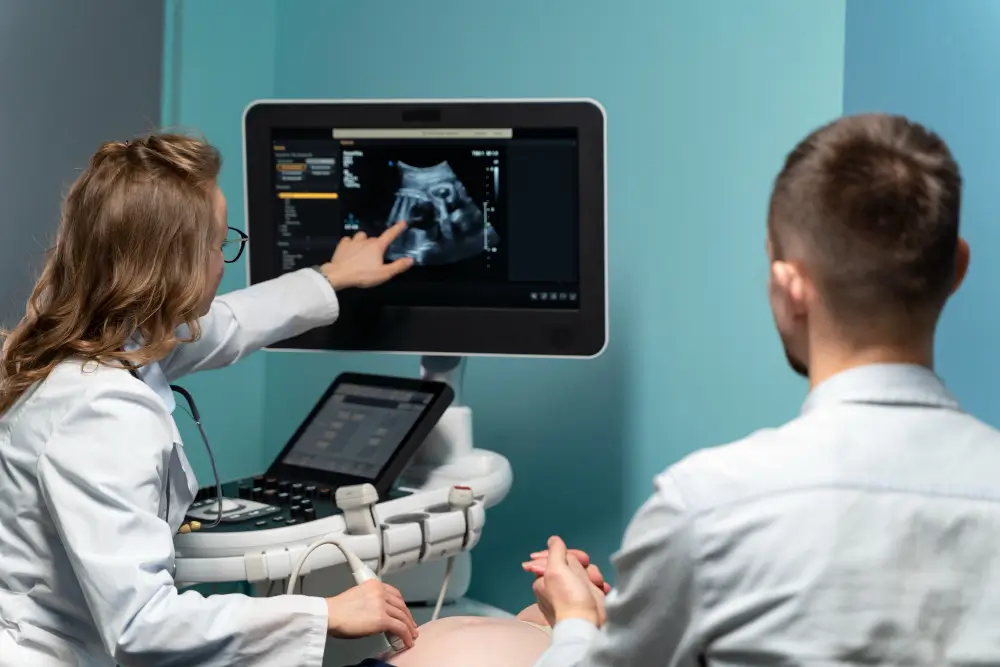Frozen Embryo Transfer (FET) is a widely used and effective assisted reproductive technique through which intended parents are able to transfer cryopreserved embryos. As the field of fertility preservation and cryopreservation of the embryo has advanced, FET has become an easy, safe, and effective option for various families to realize their dreams.
For those seeking a straightforward and empathetic process, Indian Egg Donors is there with empathy and access to high-quality FET services from top Canadian fertility clinics.
Below is everything you’d want to know about what’s involved in the Frozen donor Embryo in Canada—everything from preparation and medical processes to recovery and success rates.
Understanding Frozen Embryo Transfer (FET)
Frozen Embryo Transfer is the thawing and transfer of previously formed embryos, already stored in a prior IVF cycle. The embryos are commonly placed in the uterine wall of a woman either in her natural cycle or under hormonal stimulation to prepare for implantation in her uterine lining.
This process is ideal for:
- Intended parents who are using donor sperm or eggs.
- Individuals/couples who have remaining embryos from a prior IVF treatment
- Individuals who make use of guaranteed embryo programs utilizing frozen donor embryos in Canada
- Women who need to defer pregnancy for medical or personal circumstances
Step-by-Step Guide to the FET Process in Canada
1. Initial Consultation and Planning
It begins with a thorough consultation with your fertility specialist. Your history, previous IVF treatment, and all medical problems are considered. Intended parents at this stage are also free to discuss with Indian Egg Donors specialist guidance, choose frozen donor embryos, and be matched with suitable Canadian clinics.
2. Pre-Transfer Testing and Evaluation
Your physician will perform a few tests before the actual embryo transfer itself to test your uterine environment:
- Blood work to test hormone levels (e.g., progesterone, estrogen)
- Transvaginal ultrasounds to test lining thickness
- Infertility disease screening, if necessary
These are used by the fertility team to decide on the best time for transfer and are part of the egg donation process when transferring donor embryos.
3. Endometrial Preparation
Preparation of the lining of the uterus is important for successful transfer. Two ways through which this is done are:
a. Natural Cycle FET
In patients with normal cycle duration, embryo transfer is synchronized with natural ovulation. Monitoring is done using blood work and ultrasounds for LH surge detection.
b. Medicated Cycle FET
For patients with an irregular cycle duration or who need to have greater control over timing, physicians recommend progesterone and estrogen in order to produce a simulated natural cycle and thicken the uterine lining.
Both are designed to ensure an optimal thickness of endometrial lining to accept an embryo implantation—around 8–12 mm.
4. Embryo Thawing and Transfer Procedure
Once your uterine lining is prepared, the clinic schedules the embryo transfer. The frozen donor embryos that are retrieved are thawed in a controlled setting in the lab and viability tested.
On the day of transfer:
- The cervix is cannulated softly with a catheter
- The embryo is inserted into the uterus under ultrasound guidance
- It is painless and only takes 10–15 minutes
It needs no anesthesia, and you can resume light activities on the same day.
5. Post-Transfer Care and Monitoring
After the transfer, most clinics advise patients to:
- To rest for several hours post-procedure
- To reinstitute progesterone support (injections or vaginal suppositories)
- To avoid heavy exercise or high-impact activity
- To relax and be positive
You will be back for a beta hCG blood test 10–14 days following transfer to check if implantation was successful.
Success Rates and Advantages of FET
Frozen Embryo Transfers in Canada have been made possible through technological advancements regarding cryopreservation methods, especially vitrification. In most situations, FET success rates are similar or even greater than fresh embryo transfers.

Benefits include:
- Flexibility in scheduling
- Low risk of ovarian hyperstimulation syndrome (OHSS)
- Gives time for genetic testing (PGT-A) before freezing
- Assists in the cancellation of past IVF cycles without loss
Close proximity of most clinics to a frozen egg donor bank, who have pre-screened and pre-frozen donor eggs that can be utilized for creating embryos for future transfer.
Why Choose Frozen Embryo Transfer in Canada?
Canada is known for its ethical and high-standard fertility treatment, and FET is no exception. Fertility clinics adhere rigorously to regulations set by governing organizations like Health Canada and the Canadian Fertility and Andrology Society (CFAS). FET is also open, accessible, and welcoming to intended parents from outside Canada.
Having a reputable egg donor agency in Canada exposes you to varied donor profiles, professional counseling, and legal advice throughout the entire process of FET and embryo adoption.
Frequently Asked Questions:-
Q. What is a Frozen Embryo Transfer (FET)?
Ans : Frozen embryo transfer is a technique in which the frozen donor embryos are made ready for thawing and implanted into the uterus either naturally or under a medicated cycle.
Q. How do I prepare for a frozen embryo transfer in Canada?
Ans :Your physician will want to either start hormones or follow your natural cycle, especially when you are utilizing frozen donor embryos in Canada, to prepare your uterine lining for implantation.
Q. Is the FET procedure painful?
Ans : No, transfer is usually not painful and only lasts 10–15 minutes, anesthetically uneventful. Most patients utilizing a frozen egg donor bank also report it as less emotionally stressful.
Q. When will I know if the embryo transfer worked?
Ans : Blood test 10–14 days following transfer verifies pregnancy. Waiting time remains the same whether you are transferring your own embryos or the embryos that have resulted from the egg donation process.
Q. Can Indian Egg Donors help with FET in Canada?
Ans : Yes, Indian Egg Donors, being one of the most successful egg donor agencies in Canada, introduces you to the best fertility clinics and gives complete support throughout the FET process.
Final Thoughts
Canada’s Frozen Embryo Transfer process provides hope, flexibility, and excellent results for couples and individuals seeking to establish their family. You can transfer your own frozen embryos, donor embryos, or be part of a guaranteed program, but no matter your decision, FET is a safe and well-supported process.
With well-trained support staff and diligent planning, prospective parents can anticipate personalized care, smooth coordination with the top fertility clinics, and a supportive journey to parenthood.
If you are ready to proceed, discuss your options with a reliable fertility source and begin your journey today with frozen donor embryos in Canada.

Dr. Pooja Patel
Dr. Pooja Patel is a Chief Surrogacy Coordinator at Surrogacy4all. She has 10 years of experience in Anesthesiology and critical care medicine.
She received her medical degree from Seth GS Medical College and K.E.M Hospital in India. She then completed an internship. She finished her Anesthesia residency at Grant Govt Medical College and JJ Group of Hospitals in India.










